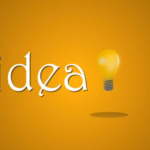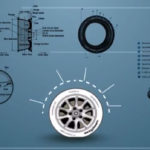3D animation is when computer generated objects appear to move through three dimensional space. In 3D animation, objects can be moved and rotated following the same principles as in real life. Computer animation makes use of 3D computer graphics to create a two dimensional moving picture that depicts three dimensions. 3D animation is used in industries as diverse as gaming and medicine, and they are commonly used for presentations and marketing across all industries. To understand 3D animation, let’s take a closer look at what it is, where it comes from and what it is used for.
What Is Animation?

At it’s most basic form, animation is an illusion, a trick of the eye, allowing us to see movement in a rapid succession of images. In order to trick the eye, the frames should move at a minimum of 12 frames a second, although there are instances where even slower speeds are used for effect. However, for 3D animation to appear as though movement is naturally occurring in three dimensional space, a much faster speed of frames per second is required, 24 at a minimum, with no still frames in between.
How Does 3D Animation Work?
Objects are created with 3D models and then manipulated within 3D software. These manipulations allow for picture sequences to be exported that make it appear as though movement is occurring in a 3D digital environment.
How Is 3D Animation Different from 2D Animation?
It’s easy to intuitively spot the difference between 2D and 3D animations in the final product. In terms of movies, Cinderella and the Little Mermaid are two examples of 2D animation, while Minions and Frozen are examples of 3D animation. But let’s break down this difference a little further. In 2D animation, all of the images and actions are flat, occurring over an x and y axes. 3D animation adds in the appearance of depth and other 3D features so that actions and objects can move along the third z-axis as well.
However, the true differences between 2D and 3D animation occurs in how they are made. The entire process for 2D animation happens in two dimensions. A sequence of drawings are created, and by slightly altering each drawing, a progression is created that when played rapidly creates the illusion of movement. 3D animation is created entirely in the computer, but it is made in three dimensions. In the first part of the process of creating 3D animation, three dimensional models are created. The animations are made by moving around these 3D models, much as you would move a puppet. Once the model has been created, animation is completed by changing the poses and placements of the model.
How Is 3D Animation Made?
There are three main phases in the creation of 3D animation:
1. Modeling: Creating a Computer Model of the Object
There are two main sources for modeling. The first is when an engineer or artist uses a 3D modeling tool to create a 3D object within the computer. The second is when real world objects are scanned into a computer to create the models.
At its most basic form, a model is made up of a series of polygons that are defined by points or vertices. A polygon needs a minimum of 3 vertices (in that case a triangle), but can have any number of vertices. A polygon with n-vertices is referred to as an n-gon. It is polygons that determine a model’s overall integrity.
The surfaces of the polygons can also be referred to as faces, with the lines created between vertices becoming edges. Even though the computer reads these forms as entirely geometric, and will render them as such, the process of actually making them, using a 3D modeling tool is not unlike virtually sculpting from clay. Tools can be used to progress from general forms to fine detailing. Other modeling software uses a mesh which can be manipulated with tools to give the object form.
Materials and Textures are then added to the model that has been created with polygons. Materials gives information to the render engine about how it should treat light when it hits the surface of the object. Texture adds color to the materials, using an albedo map, and can also add features to the surface with a bump map.
2. Layout & Animation: Placing and Moving the Object in the Scene
During the modeling phase, a great many number of controls are built into the model, allowing it to be animated. For an animal or human model, oftentimes a skeletal animation is first created. This can aid in assigning animation variables (Avars). This allows for variations in each part of the body which can be used to create animation. For example, a character like Woody from Toy Story had 700 Avars, with 100 in the face, while Aslan from The Chronicles of Narnia used 1,851 with over 700 in just the face.
Each individual Avar gives the animator a controller whereby it can move the object through the set, much like an extremely complex marionette. This process is called keyframing.
Another method, which is becoming increasingly popular is motion capture. A live actor’s motions and movements are recorded using markers and video. This is then applied directly to the model.
The layout phase involves creating the set and placing the object in it. This includes determining the location and size of objects in relation to each other and the set.
3. Rendering: Computer Calculations that Generate the Image
There are two main types of rendering. The first is for photorealistic results and simulates light transport and scattering. The second creates non-photorealistic rendering by applying an art style. Rendering also requires 3D projecting which displays the 3D image in two dimensions.
Rendering is done using specialized software. It is not well suited to home computers, as it requires a great deal of power—what can be done in an afternoon on professional equipment would take 300 hours on a home computer. some 3D modeling software can be used to perform rendering, but there is also specific 3D rendering software.
What Is the History of 3D Animation?
The Earliest Days of Computer Animation
The first known experiments with computer graphic animation occurred in the 1940’s and 50’s, including by John Whitney, who is often considered the father of computer animation. Whitney’s early films made on a rig with an anti-aircraft analog computer are all the more impressive when considering that the first digital image was not made until 1957, when Russell Kirsch attached a drum scanner to one of the first programmable digital computers.
However it was not until the 1960’s when digital computers were more available, that computer animation began to be used. In the beginning it was primarily for research and scientific purposes, but by the middle of the decade people began experimenting artistically with the medium. However, the world’s first computer drawn film was actually made for marketing purposes.
A 49-second vector animation of a car driving down a planned highway, from the driver’s perspective was made by the Swedish Royal Institute of Technology for the Royal Swedish Road and Water Construction Agency in 1960 and broadcast in 1961 at primetime during a news program in Sweden.
During the 1960’s many innovations and breakthroughs in the world of computer animation was achieved at Bell Labs in New Jersey, while Boeing pioneered the use of computer graphics, particularly in the hands of a graphic designer named William Fetter who actually invented the phrase, “computer graphics.” His innovations directly led to the first animated ‘wire frame’ figures, which were so central to the early creation of 3D animation.
As the 1960’s progressed, computer animation innovation was happening all around the globe. In Russia, a group of Soviet mathematicians and physicists made a mathematical model for the motion of a cat, and in so doing, created the world’s first character animation. In England, Atlas Computer Laboratory made the first entertainment cartoon, Flexipede, shown in 1968. The National Film Board of Canada began employing some groundbreaking techniques with artistic results.
The 1960’s also saw the first use of motion control photography, the antecedent to motion capture animation, with animation pioneer John Whitney’s work on Stanley Kubrick’s 2001: A Space Odyssey
The Beginning of 3D
It was in the 1970’s that there was the first movement towards true 3D animation, when the film, Futureworld used 3D wireframing to create a hand and face. By the end of the 1970’s wireframe rendering and wireframe model graphics had been used in some major Hollywood blockbusters including in Star Wars for the Millennium Falcon and in Alien to create the alien.
During this time, computer graphics were undergoing great improvements as new technologies emerged from different laboratories, research institutes, companies, film studios and even NASA. One of these was the use of fractals, which allowed for greater realism in 3D animation.
The 1980’s saw not only a great increase in access to computers, but a proliferation of software available that allowed people to create computer graphics and 3D animation. The software that came out throughout the 1980’s are the predecessors to the 3D animation software still used today.
CGI (Computer Generated Imagery) in Blockbuster Movies
By the 1990’s CGI was ready for the spotlight, making appearances in major blockbuster films like Terminator 2 and Jurassic Park. Motion capture was also used in big films, notably Titanic to help create the natural appearance of many people.
Keeping up with the success on the big screen, huge innovations were made in 3D animation, techniques and technology throughout the 1990’s. However, in films that were entirely animated, not just employing CGI for special effects, there was one major piece missing.
Computer generated animations had been unable to create natural appearing movement of the face. A big step towards solving this was accomplished in 2000 when Paul Debevec and his team were able to capture and then simulate a reflectance field over a human face. This would make it possible to create digital images of actors that truly appeared like them realistically.
In some instances, motion capture is used to create the most realistic form of animation for CGI, although this has led to some controversy, including the American Motion Pictures Arts and Sciences, declaring it not an animation technique on its own, and that movies that use it alone will not be eligible for the Best Animated Picture Feature.
What Is 3D Animation Used For?
Although a lot of the history of animation is most apparent to the general public in how it has been used in the entertainment industry, the truth is that 3D animation is used across a wide variety of industries, now more than ever before.
In the beginning as much as 3D animation was developed for the arts, it was also being used for research and science. But today it doesn’t stop there. Let’s take a look at just a few of the many ways in which 3D animation is used.
- Television and Movies: Both for special effects in live action movies and television shows or to create entirely animated programs, 3D animation is everywhere in television and movies in the 21st century.
- Gaming: 3D animation is central to this booming industry.
- Education: Studies have shown that people can remember videos better than other forms of media, especially as it often captures attention better. It’s a great way to demonstrate concepts, especially as distance learning increases.
- Commercials and Other Advertising: It’s amazing how much a 3D animation can bring to advertisements, not just commercials, but also online and in expanded platforms, such as on social media and in-app advertisements.
- Marketing: 3D animation can punch up any marketing campaign a lot, and help to reach more people.
- Medicine: Within the medical field, 3D animation is used for a wide variety of tasks, and has been employed since the earliest days of computer graphics. Some of its uses include simulations of dissections and surgeries, providing patient education and helping with pharmacological and medical device marketing.
- Architecture and Design: 3D animation provides advantages to all involved in a building project. 3D animation provides the experience of being able to walk through a space that is only envisioned, and does not yet exist. This is perfect for an architect or engineer to spot any flaws. It creates a simpler map for the construction firm and it offers the customer a way to understand the project, even allowing them to experience different times of day in a building that doesn’t yet exist.
- Retail: As online shopping has exploded, more and more retailers have found 3D animation invaluable in propping up product descriptions, truly allowing their company to stand apart and presenting the product to the consumer in a way they can more easily understand.
- Simulations: In situations where practicing in real life circumstances leads to too much risk then simulations can be a powerful tool. Examples of this include military drills and medical procedures. This can also be used to assess possible outcomes and risks in a potential situation.
- Prototyping: Important especially to the manufacturing industry, prototyping allows an object to be virtually created, tested and explored prior to manufacturing. This can also be used to create machinery. 3D animation allows for a much higher rate of technological progress at lower overhead costs.
What Are the Benefits of 3D Animation?
There are numerous benefits for 3D animation for a wide variety of companies across many industries. Here’s a few reasons why it’s so advantageous:
- It catches the audience’s attention: With its broad appeal, 3D animation captures people’s attention from the moment it’s on.
- It engages the audience: 3D animation is the ideal way to promote audience participation, increasing interest in a brand.
- It attracts a larger audience: Because it can be posted on multiple outlets and platforms, company’s can reach a much wider audience.
- It builds a brand: 3D animation is one of the most effective tools for successful branding, in part for all of the aforementioned reasons, but also because on its own it helps establish a strong reputation and enhances the message.
- It communicates a lot quickly: The brain can process visual images up to 60,000 times faster than text. This means you can say so much more in a much shorter amount of time.
And that bring us to the number one benefit of using 3D animation: it lets you tell your company’s story most effectively.







